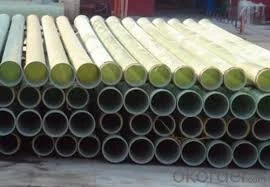
-
 Afrikaans
Afrikaans -
 Albanian
Albanian -
 Amharic
Amharic -
 Arabic
Arabic -
 Armenian
Armenian -
 Azerbaijani
Azerbaijani -
 Basque
Basque -
 Belarusian
Belarusian -
 Bengali
Bengali -
 Bosnian
Bosnian -
 Bulgarian
Bulgarian -
 Catalan
Catalan -
 Cebuano
Cebuano -
 China
China -
 China (Taiwan)
China (Taiwan) -
 Corsican
Corsican -
 Croatian
Croatian -
 Czech
Czech -
 Danish
Danish -
 Dutch
Dutch -
 English
English -
 Esperanto
Esperanto -
 Estonian
Estonian -
 Finnish
Finnish -
 French
French -
 Frisian
Frisian -
 Galician
Galician -
 Georgian
Georgian -
 German
German -
 Greek
Greek -
 Gujarati
Gujarati -
 Haitian Creole
Haitian Creole -
 hausa
hausa -
 hawaiian
hawaiian -
 Hebrew
Hebrew -
 Hindi
Hindi -
 Miao
Miao -
 Hungarian
Hungarian -
 Icelandic
Icelandic -
 igbo
igbo -
 Indonesian
Indonesian -
 irish
irish -
 Italian
Italian -
 Japanese
Japanese -
 Javanese
Javanese -
 Kannada
Kannada -
 kazakh
kazakh -
 Khmer
Khmer -
 Rwandese
Rwandese -
 Korean
Korean -
 Kurdish
Kurdish -
 Kyrgyz
Kyrgyz -
 Lao
Lao -
 Latin
Latin -
 Latvian
Latvian -
 Lithuanian
Lithuanian -
 Luxembourgish
Luxembourgish -
 Macedonian
Macedonian -
 Malgashi
Malgashi -
 Malay
Malay -
 Malayalam
Malayalam -
 Maltese
Maltese -
 Maori
Maori -
 Marathi
Marathi -
 Mongolian
Mongolian -
 Myanmar
Myanmar -
 Nepali
Nepali -
 Norwegian
Norwegian -
 Norwegian
Norwegian -
 Occitan
Occitan -
 Pashto
Pashto -
 Persian
Persian -
 Polish
Polish -
 Portuguese
Portuguese -
 Punjabi
Punjabi -
 Romanian
Romanian -
 Russian
Russian -
 Samoan
Samoan -
 Scottish Gaelic
Scottish Gaelic -
 Serbian
Serbian -
 Sesotho
Sesotho -
 Shona
Shona -
 Sindhi
Sindhi -
 Sinhala
Sinhala -
 Slovak
Slovak -
 Slovenian
Slovenian -
 Somali
Somali -
 Spanish
Spanish -
 Sundanese
Sundanese -
 Swahili
Swahili -
 Swedish
Swedish -
 Tagalog
Tagalog -
 Tajik
Tajik -
 Tamil
Tamil -
 Tatar
Tatar -
 Telugu
Telugu -
 Thai
Thai -
 Turkish
Turkish -
 Turkmen
Turkmen -
 Ukrainian
Ukrainian -
 Urdu
Urdu -
 Uighur
Uighur -
 Uzbek
Uzbek -
 Vietnamese
Vietnamese -
 Welsh
Welsh -
 Bantu
Bantu -
 Yiddish
Yiddish -
 Yoruba
Yoruba -
 Zulu
Zulu
insulated frp covers
The Advantages of Insulated FRP Covers
In today's world, the demand for sustainable and energy-efficient solutions is rising. Industries worldwide are making strides to minimize their carbon footprints and enhance productivity. One key often-overlooked aspect of this endeavor involves the implementation of insulated Fiber Reinforced Polymer (FRP) covers. These innovative solutions offer myriad benefits across various applications, including energy conservation, durability, and cost-effectiveness.
What are Insulated FRP Covers?
Insulated FRP covers are specialized constructions made from fiberglass reinforced plastic materials designed to provide superior thermal insulation. They come equipped with insulating cores, often crafted from materials like polyurethane or polystyrene, which helps combat thermal bridging and significantly reduces heat transfer. These covers find application in multiple sectors, from industrial processes to residential buildings, and even in transportation and storage.
Energy Efficiency and Thermal Insulation
One of the primary benefits of insulated FRP covers is their excellent thermal insulation properties. In industrial environments, heat loss can significantly impact energy consumption, leading to increased operational costs. By implementing insulated covers, facilities can maintain optimal temperatures with reduced reliance on HVAC systems. This not only cuts energy costs but also reduces the overall carbon footprint of the facility. The insulation limits heat exchange, ensuring that processes using heated materials maintain efficiency while minimizing energy waste.
In residential settings, insulated FRP covers can enhance energy efficiency by reducing heating and cooling costs. Homeowners can enjoy a more comfortable living environment while leveraging the insulation qualities of these covers to maintain consistent indoor temperatures.
Durability and Longevity
Insulated FRP covers are exceptionally durable and are designed to withstand harsh environmental conditions. Unlike traditional insulation materials, fiberglass is resistant to corrosion, rust, and chemical degradation, making it ideal for industrial settings with exposure to chemicals or moisture. The lightweight nature of FRP materials also means that they are easier to handle and install, reducing labor costs and time associated with traditional cover installations.
Moreover, these covers can endure extreme weather conditions, including heavy rain, snow, and UV radiation. This longevity ensures that facilities can enjoy the benefits of their insulation systems without frequent replacements or repairs, translating to long-term savings.
insulated frp covers

Cost-Effectiveness
While the initial investment in insulated FRP covers may be higher than conventional materials, the long-term savings they provide often outweigh this cost. Reduced energy bills, lower maintenance costs, and extended lifespans all contribute to a favorable return on investment. Furthermore, in industries with tight profit margins, the efficiency and cost savings garnered from using insulated FRP covers can make a significant difference.
Versatility in Applications
The versatility of insulated FRP covers is another major advantage. These covers find applications in various fields, including food and beverage processing, pharmaceuticals, and even electronics. In all these industries, temperature control is crucial, and insulated FRP covers help maintain the required conditions.
In the food processing sector, for instance, maintaining strict temperature controls is essential for food safety and quality. Insulated FRP covers can help protect sensitive ingredients and products from temperature variations. Similarly, in the pharmaceutical industry, precise temperature regulation is critical to meet safety and effectiveness standards.
Sustainability and Environmental Impact
As industries pivot towards more sustainable practices, insulated FRP covers align perfectly with these initiatives. By improving energy efficiency and reducing greenhouse gas emissions, businesses can demonstrate their commitment to corporate social responsibility and environmental protection. Moreover, the materials used in manufacturing FRP can often be recycled, further enhancing their sustainability profile.
Conclusion
Insulated FRP covers present a myriad of advantages that cater to the needs of modern industries and households. With exceptional energy efficiency, durability, cost savings, versatility, and a commitment to sustainability, these innovative solutions are rapidly becoming a preferred choice in various applications. As the world continues to embrace the importance of energy conservation and environmental stewardship, insulated FRP covers stand out as a significant step towards achieving these goals. By incorporating these efficient systems into future infrastructures, we can build a greener, more sustainable future for generations to come.









